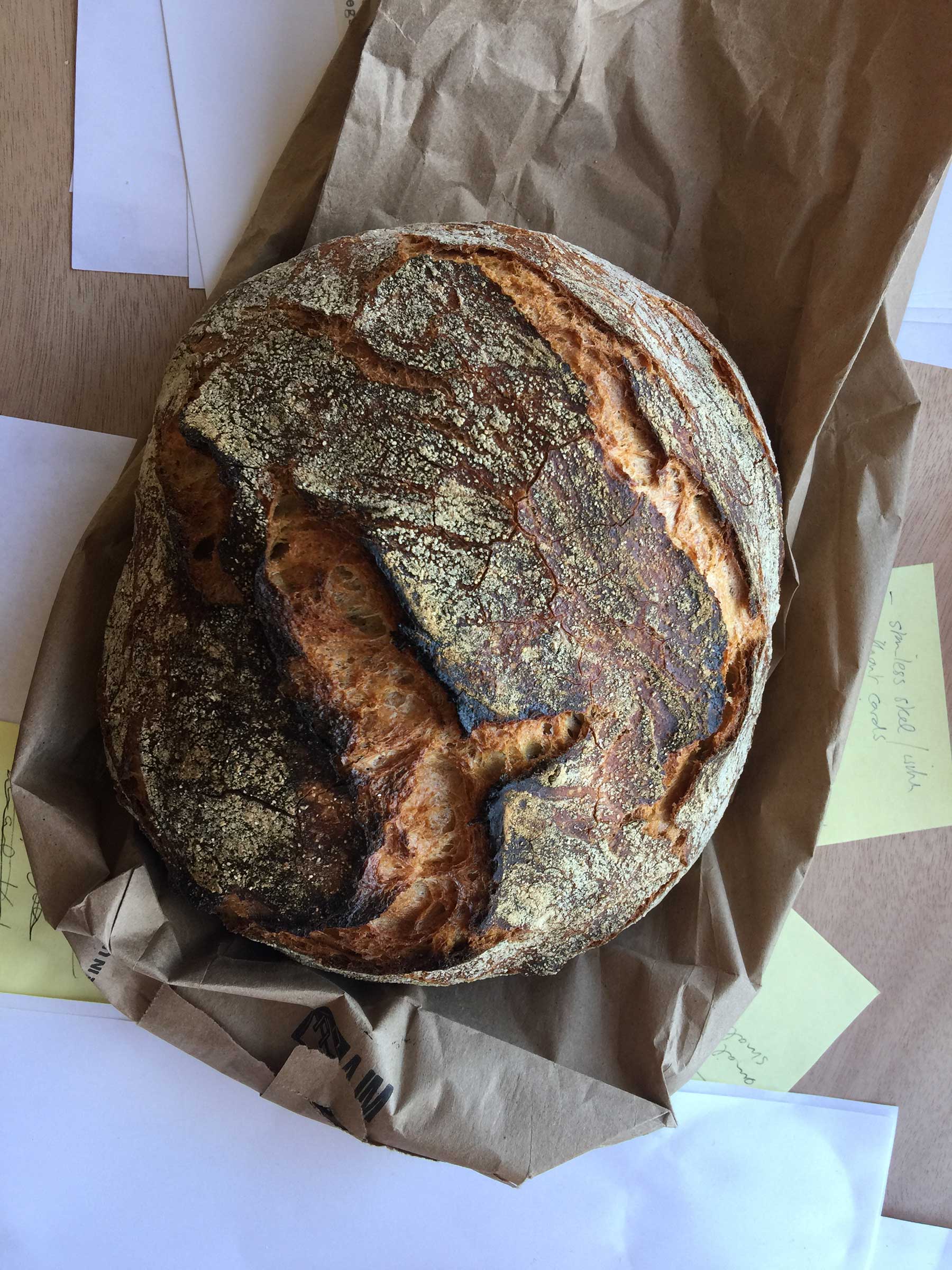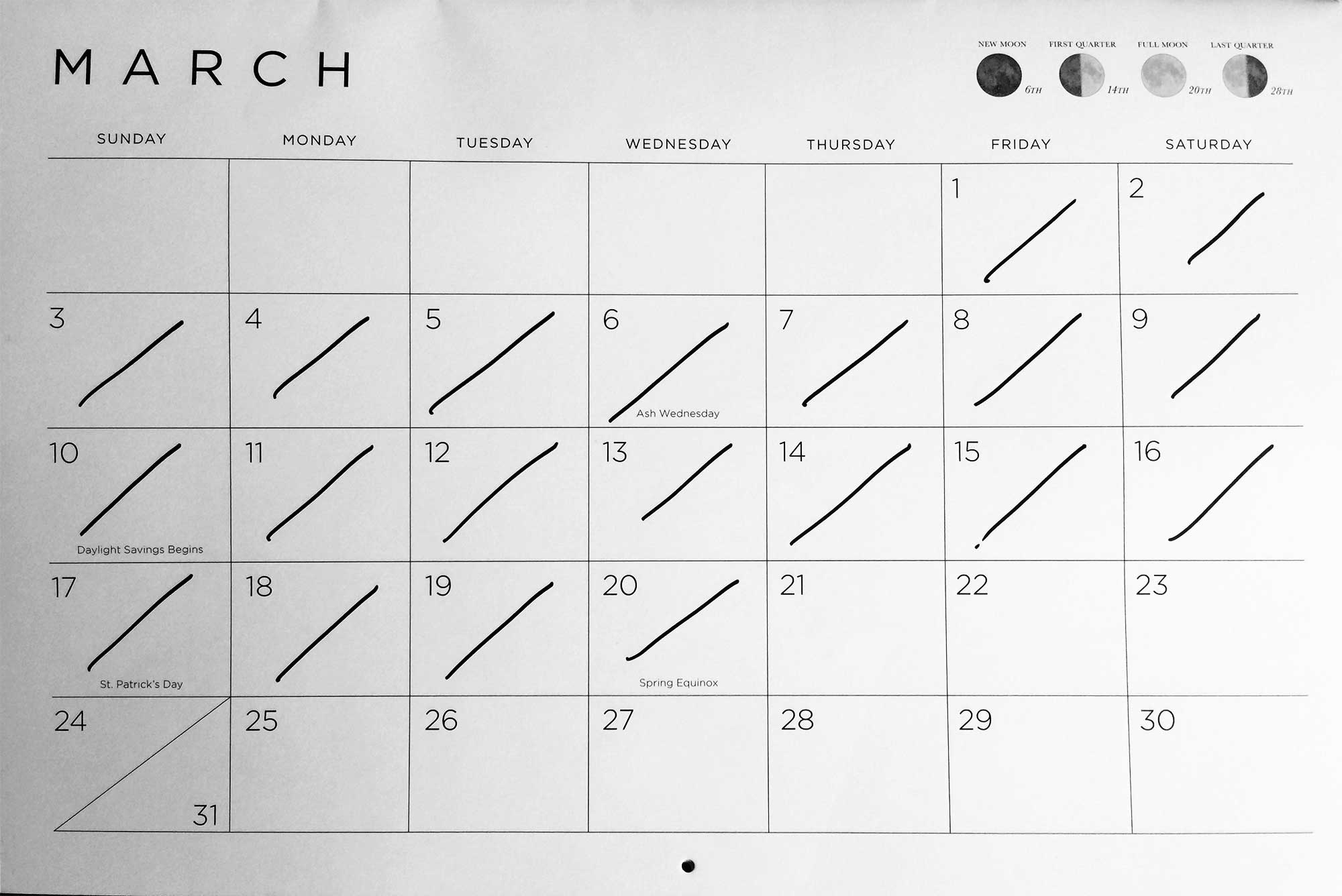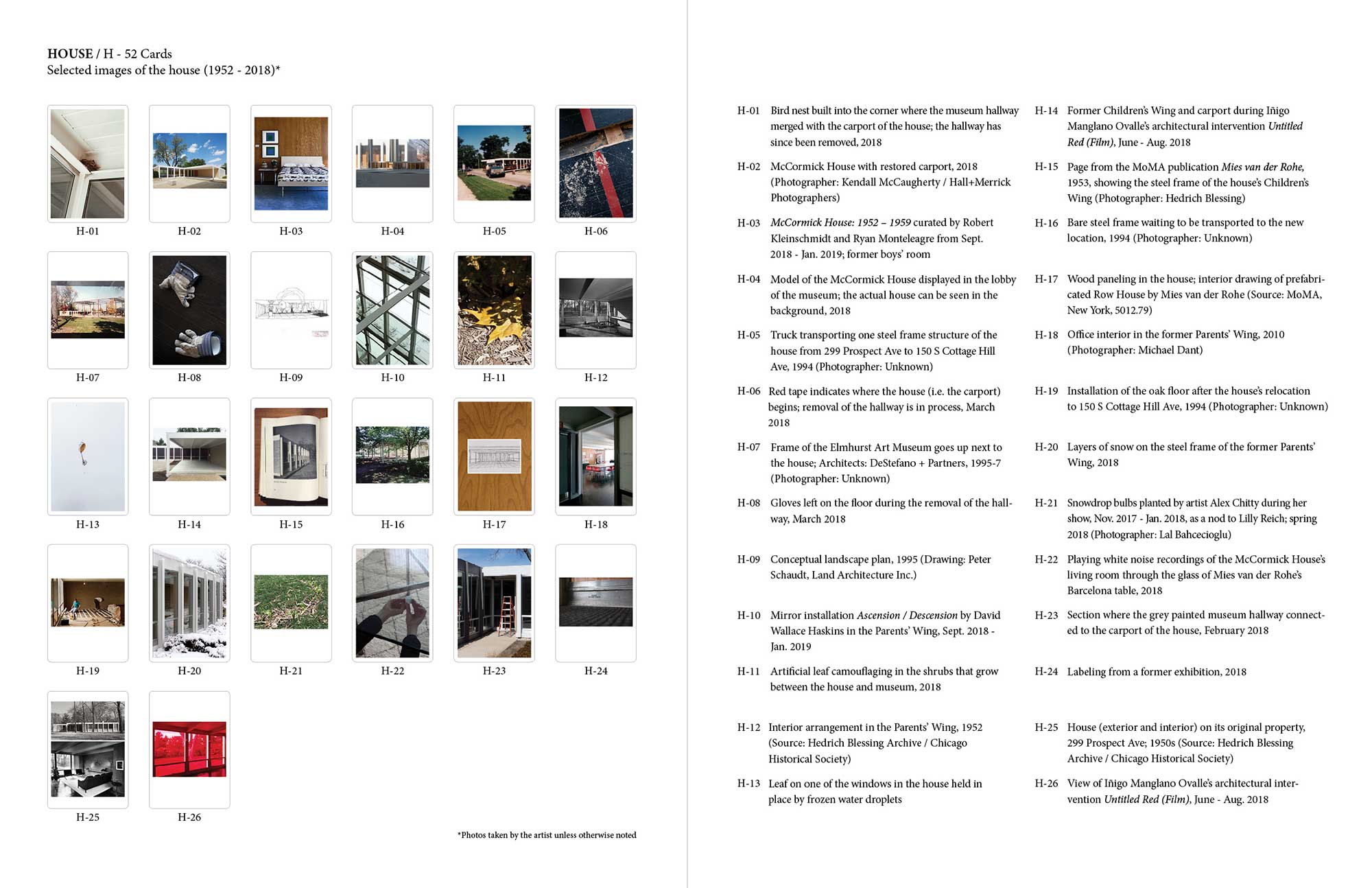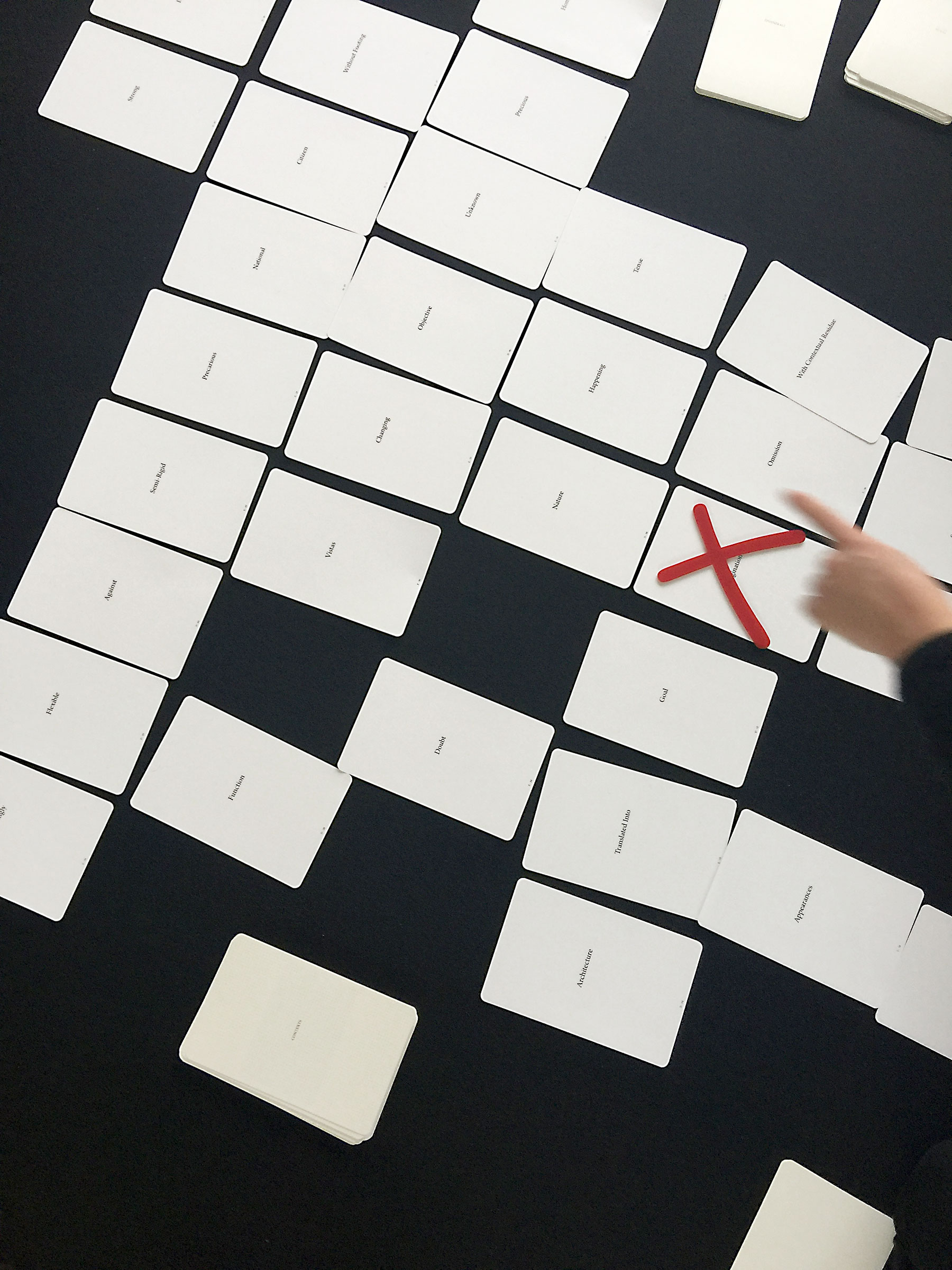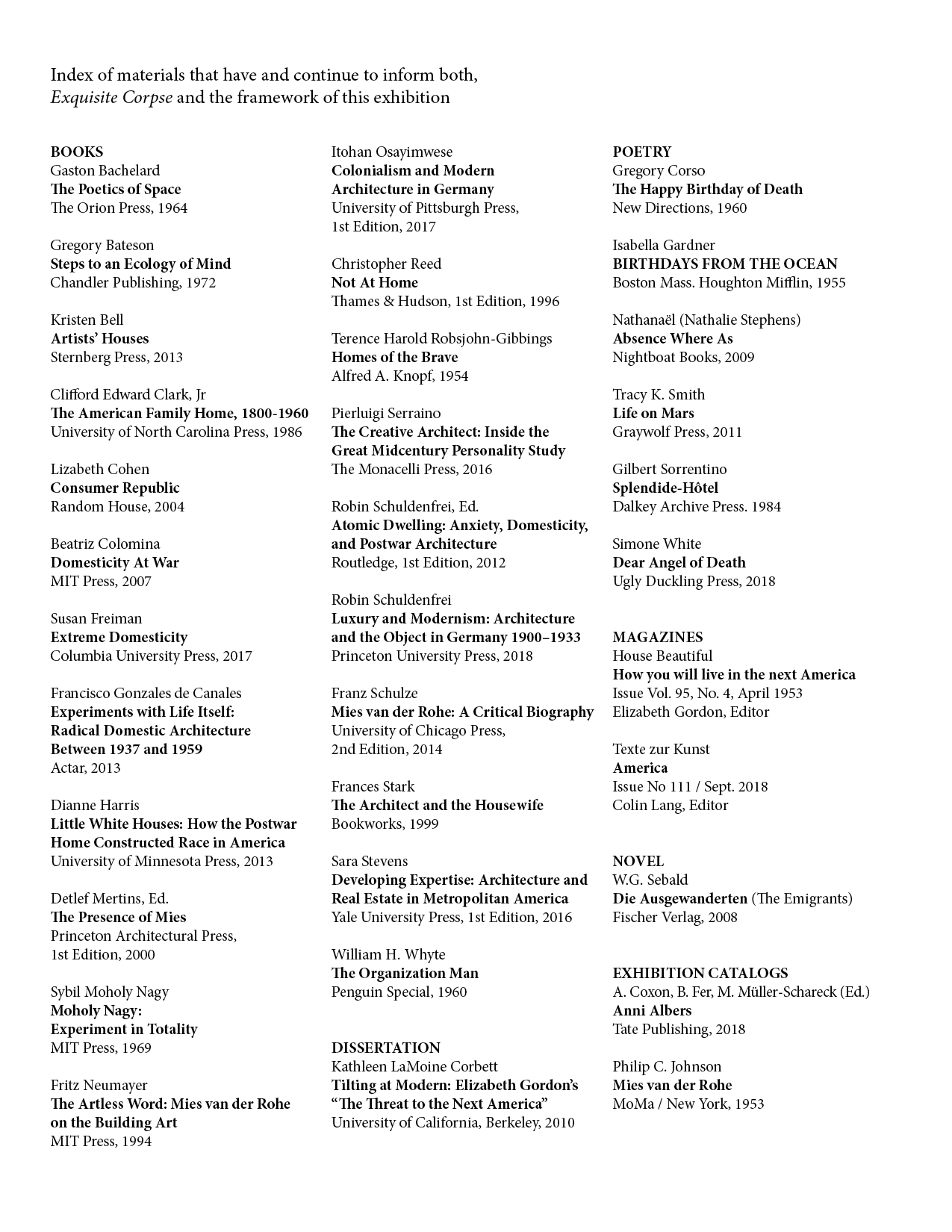A Publication
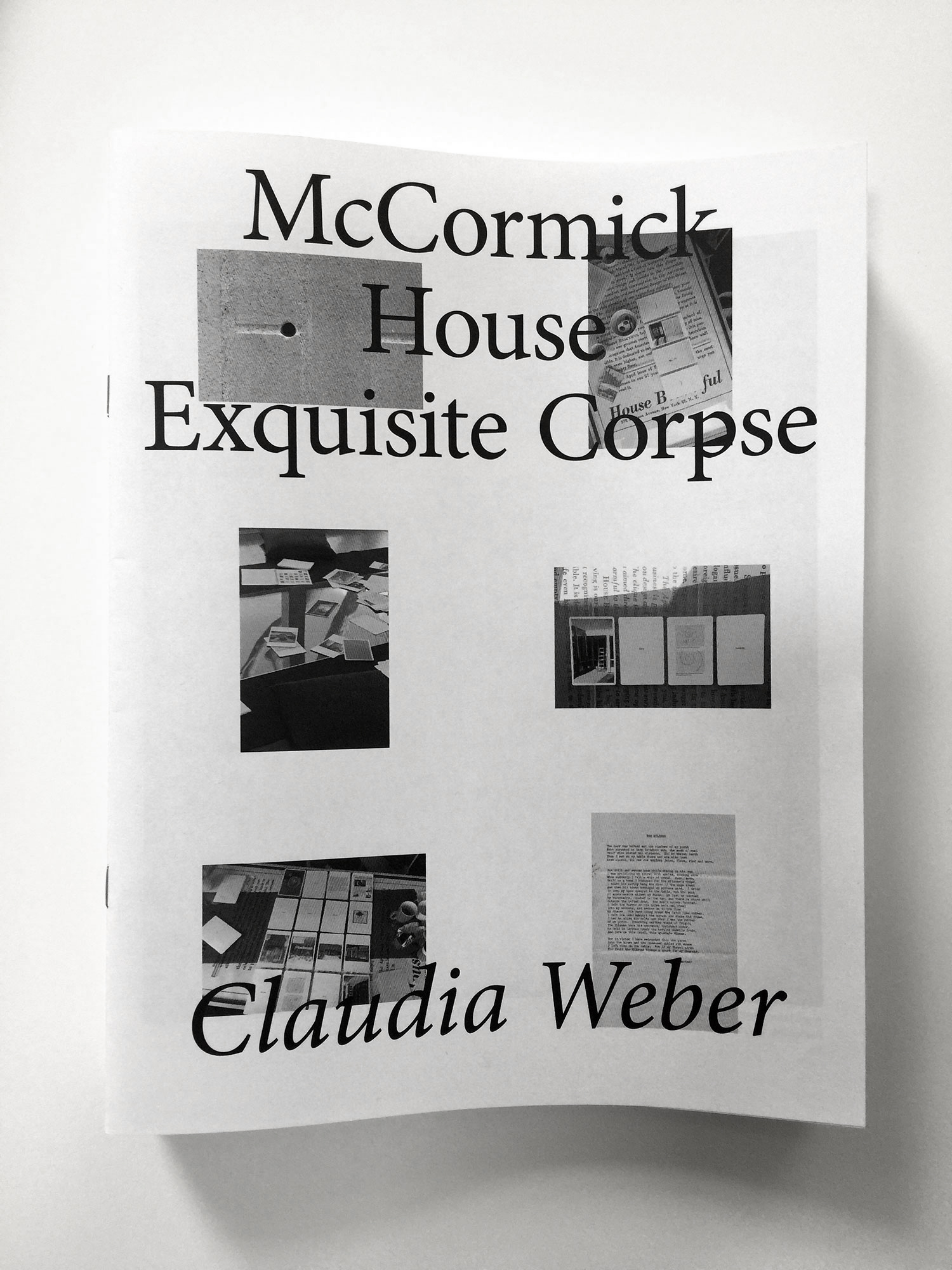
Cut in half for its move to its new site to be reassembled with additions and omissions, the McCormick House could be, in my opinion, perceived as an Exquisite Corpse.
The Exquisite Corpse cards were not only a tool for play and a device to see a multitude of historical and poetical layers of the house, but also a prop that started conversations and speculations. I created the publication McCormick House Exquisite Corpse as a documentation of the cards and their uses over time. The publication was developed in collaboration with Other Forms and launched on the last weekend of my stay.
The Narrative of Looming Demolition
Exquisite Corpse
Public-Private Zones
Privacy and the home
Diagram from Little White Houses: How the Postwar Home Constructed Race in America, by Dianne Harris, University of Minnesota Press, 2013. I will respond to this diagram with my own, one that represents the current public / private zones in the McCormick House. That diagram will need to introduce time as an additional segment (museum hours: 11am-5pm).
Nightly Illumination
Notes
This morning I bought a chocolate croissant. I left it in my backpack knowing that it otherwise would attract ants. I almost forgot about it. Only when I started to crave something sweet it came back to my mind. I opened the paper bag and took a bite. I then looked at the crust and the chocolate core and I thought I was hallucinating, seeing ants crawling in between the different layers of the croissant. It even seemed as if there was no longer a chocolate core just a dense army of interlocked ants that created the impression of one. It felt like a surreal scene, a psychological reading of sorts. My state of being awake and asleep in the house has become as seamless as the inside and outside of it, divided by just a layer of thin glass.
Exquisite Corpse
Birthday Celebration
Coffee and Cake
Professor Julietta Cheung from SAIC / Contemporary Practices brings her class to the McCormick House to discuss my project, including the Exquisite Corpse cards and their underlying research principles. We conclude the session by setting up tables in the courtyard between the museum and the McCormick House to launch Coffee and Cake, a public celebration of Mies van der Rohe’s and my birthday. The center piece for the event is a German Black Forest cake.
Seating Arrangement
During the day
At night
Butter board, which is often used to build architectural models, provides the base for this seating arrangement, which circles around the Exquisite Corpse card set.
Bread for A Home / In A Museum
A museum visitor, with whom I had an extended conversation in the McCormick House, returns a week later with bread. He leaves it on my table. Only later do I learn that it is homemade.
A Bit of Bread (by Daniel Buren)
An empty museum or gallery means nothing, to the extent that it can at any time be transformed into a gym or baker’s, without changing what will be sold there, in terms of works of art in the future, since the social status will also have changed. Placing/exhibiting a work of art in a baker’s will in no way change the function of the aforementioned baker’s, which will never change the work of art into a bit of bread either. Read more Read More
Project Folder
Contextual Residue
Traces from a former exhibition floor labeling.
The adhesive layer of the “PLEASE DO NOT TOUCH” lettering, which was applied to the floor to inform about a sculptural object nearby, bond so well with the wooden floor’s top layer, that its message became etched into the floor’s surface, continuing its task even after it had been removed.
Note
Even after living in the house for five weeks I hardly know it. This might be due to the constantly changing soundscape it creates. Each weather and time of day translates differently across the building’s structures and materials.
299 Prospect Ave
Greenwald House Planning
Letter from architect Gustave W. Iser to Ludwig Mies van der Rohe and developer Herbert Greenwald
The letters show that drawings of the McCormick House as well Gardner’s/McCormick’s experience with the cork floor played a role in the planning and construction process of the Greenwald House, which was built in Weston, Connecticut, in 1955 for Morris Greenwald, the brother of developer Herbert Greenwald. (Source: Richard Wolf)
Kitchen
Notes
I had a truly inspiring meeting with Sarah Rogers Morris in the McCormick House. She is a brilliant observer. She introduced me to The Chicago Architects Oral History Project at the Art Institute of Chicago, where I found an interesting interview with Alfred Caldwell, in which he talks about IIT and Mies van der Rohe, beside many other topics.
Exquisite Corpse
Contexts card; text source: The Organization Man by William H. Whyte, p.181, 1960
From 1908 to 1940, Sears sold between 70,000 to 75,000 homes. The company designed 447 different house styles to fit the taste of home buyers across the country. From Craftsman to Cape Cods, they offered a custom home at budgets and sizes that could accommodate any size family. The majority of Sears homes were built in the Northeast and Midwest, with the largest grouping being in the city of Elgin, IL, where one community has more than 200 verified Sears homes.
Exquisite Corpse
Unfocused Times

Note on closed door of the small living room / work space / bedroom.
I made the mistake of thinking that before 11am and after 5pm I would have time to focus. I didn’t take into account the cleaning of the museum at early hours, repair works, special visits, tours, evening events, etc. I also underestimated how much time a remote kitchen, bathroom, and shower would consume. In fact, my stay at the McCormick House is the opposite of an artist residency, which provides an environment where artists are shielded from daily chores and any interruption that would interfere with their work.
Tablecloths
Trying To See the Sun Set
Kitchen Basics
Shelf design: Claudia Weber
Shelf carrying basics: cups, bowls, plates, induction plate, pots, water filter, coffee, tea, thermos, etc. Read More
Model of A Steel House
Mies On Prefabrication
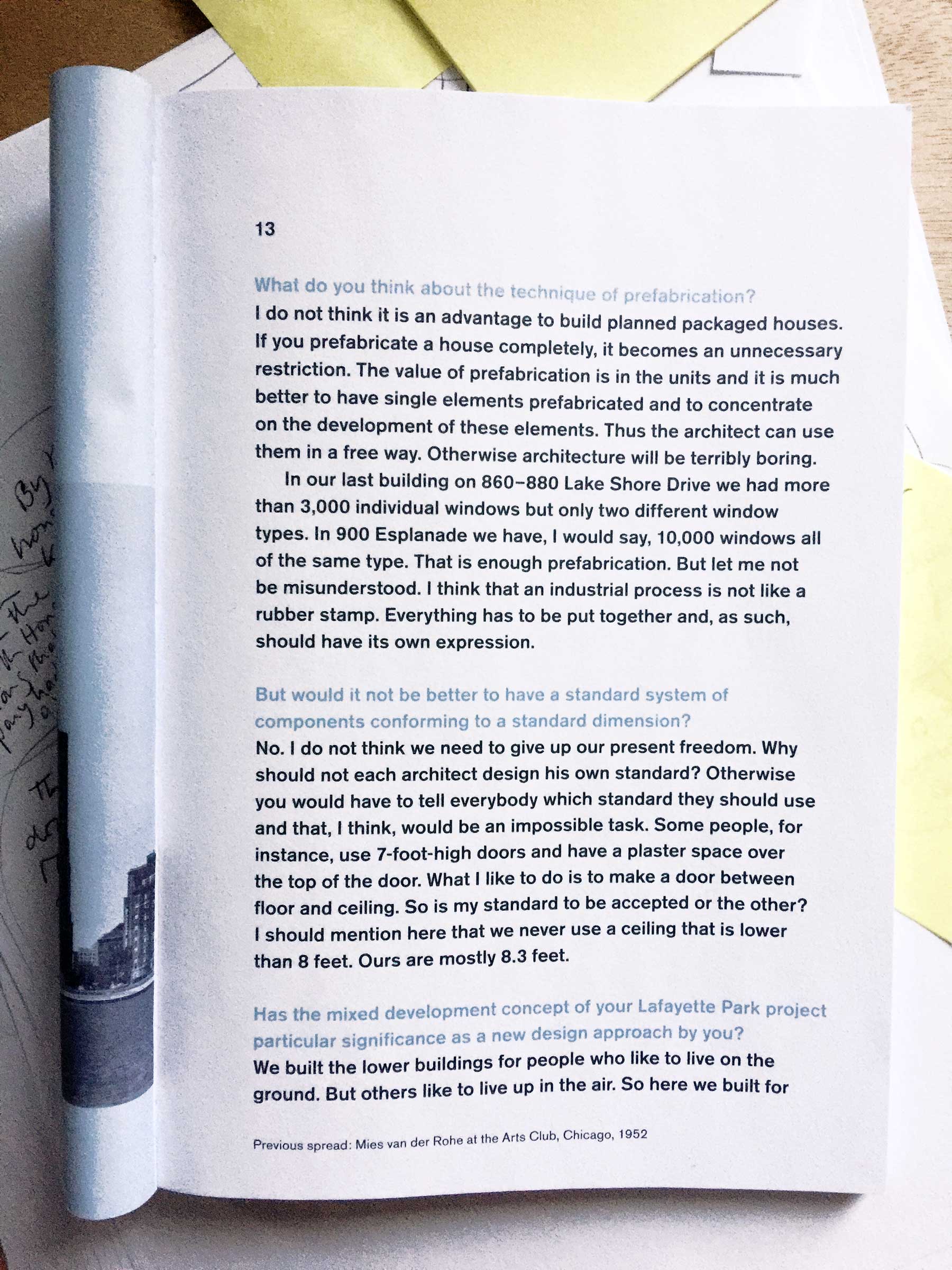
On prefabrication
From the book Conversations with Mies van der Rohe, editor Moises Puente, 2006
House Details
Soss concealed hinges
Details from the McCormick House: Hinges of the door to former boys’ room. In the original layout, this door was used for the bathroom.
Notes
It took me two weeks to feel comfortable leaving my home and be absent while others explore it.
Take-Out

A few days ago I ordered take-out and found three fortune cookies in the bag.
Replaced Vistas
Windows on the south side of the McCormick House frame the gridded museum walls.
Beatrix Colomina in her book Domesticity at War (2007) quotes from Thomas Hine’s book Popolux (1996), where he observed that the largest windows in the houses of Frank Lloyd Wright, Mies van der Rohe, and Richard Neutra framed the most spectacular views of the landscape, while picture windows in developers’ houses would “look out on whatever happened to be outside.” When the McCormick House was moved from its large, wooded lot on 299 Prospect Ave to the open area at the north end of Wilder Park in Elmhurst in 1994, its windows then also looked out on whatever happened to be outside or has been built ever since: Beyond the park, the house’s north-facing windows now frame parking lots and office buildings located behind it. The Elmhurst library, which Mies van der Rohe’s grandson Dirk Lohan designed, is seen peripheral to the left and becomes more prominent after dark when it is illuminated. The windows on the south side face the museum’s lobby and tall side wall as well as David Wallace Haskins’ Sky Cube. (…)Read More
Message Board
Exquisite Corpse
House card; collage with sketch by Mies van der Rohe.
Elm paneling in the McCormick House’s current living room (former Children’s Wing)
After the McCormick House was moved to 150 S Cottage Hill Ave in 1994, its panels were reconfigured. The girl’s bedroom panels were removed as well as the bathroom door and the separating wood panel wall of the storage space, which would have run parallel to the brick wall. The resulting layout in the large open space of the former Children’s Wing now looks identical to one of Mies van der Rohe’s sketched interiors of a prefab steel house (1950s ?).
Notes on Utopia, History and Architectural Form
Within the context of this project and as the editor of Plot.online, I would like to point to Sebastian Mühl’s new contribution Notes on Utopia, History and Architectural Form: How does contemporary art remind us of the ruined utopias of the past? And how do the universalist claims of modernist architecture reappear in the light of contemporaneity? A post-utopian perspective is not retrogressive per se but rather holds true to the emancipatory claims of modernity by criticizing its problematic aspects.
– Sebastian Mühl
plot.online/plot/points/notes-on-utopia-history-and-architectural-form/
Table Configurations
The Artist Resides
On several occasions I overheard people using the term artist-in-residence when describing this project. While I understand the reason behind it–it is an established description that can be easily communicated–I consider this term misleading. The Elmhurst Art Museum does not run an institutionally established artist-in-residence program. Instead, taking up residence in the McCormick House is a crucial part of my site-responsive concept that I specifically developed for this prototype by Mies van der Rohe after having been invited to do an exhibition here.
People in the Park
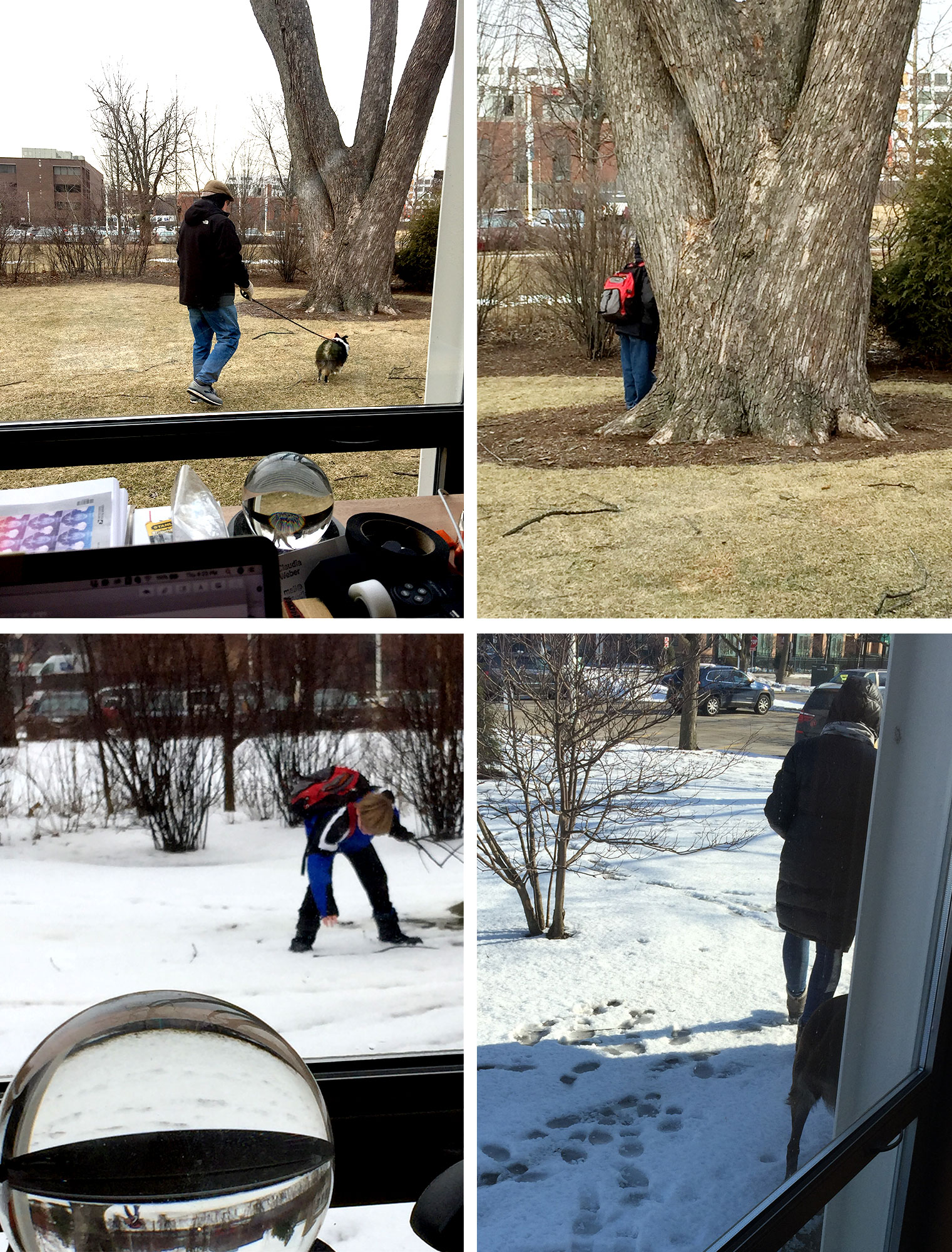
Instead of a private backyard, the north side of the house now faces the end part of Wilder Park.
Exquisite Corpse
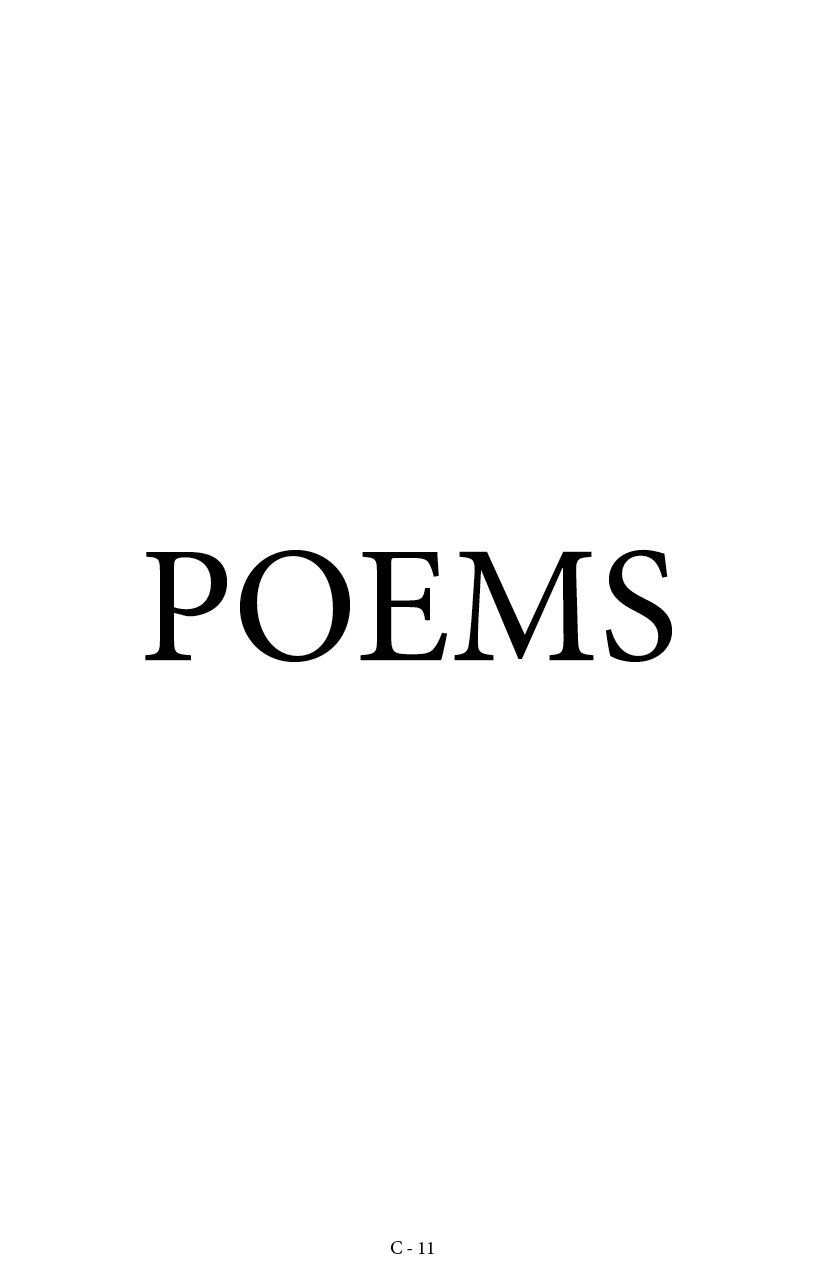
Contexts card; Acronym
POEMS: People, objects, environments, messages, and services are the elements that can be selected and designed to provide a systemic offering. These elements help define a territory selected by the company (Source: IIT Institute of Design website, 2018 – This content is no longer available).
Exquisite Corpse
Chess Game
Isabella Gardner (right) playing chess at the Chicago Chess Club. Gardner lived in the McCormick House from 1952-1959. She was a poet and also worked as an editor for the Poetry Foundation, Chicago.
WUSTL Digital Gateway Image Collections & Exhibitions, accessed February 23, 2019. Photographer: Unknown.
Exquisite Corpse
I greet you and all friends of the square.
Theo von Doesburg in a letter to Mies van der Rohe in the 1920s.
Extended Floor Plan
Daybed
Claudia Weber, Elm (2019), b&w photo printed on textile, aluminum rods, 33″ x 95″
I turned my regular bed into a daybed on a daily basis, offering myself a resting place in my study. There were two layers that I could invoke for privacy. The first one was subtle. A semi-transparent space divider would give me some privacy while provoking a somewhat intimate encounter with visitors. The motif on the fabric repeated one of the bookmatched elm patterns in the house, which I had photographed, scanned, enlarged, and then printed onto the textile. The sloppy work of the photo lab had left chemical traces on my negative (i.e. darkly outlined circles) that showed prominently on the scan. But together with the dust that had collected on the photograph these accumulations of people’s gestures, of substances across time became for me a fitting element for the McCormick House, both as a spatial addition and a poetical gesture.
The second layer of privacy was direct and clear: A closed door with a note telling visitors not to disturb the artist.
Exquisite Corpse
Kitchen Walks

Repurposed darkroom developing tray to bring cups etc. from and to the kitchen.
Kitchen 1950s
Children’s Wing of the McCormick House in the 1950s: Kitchen area with small living room / dining room / play area in the back. Behind the elm paneled wall with bookshelves is a storage space that could also be accessed from the outside. Source: Hedrich Blessing Archive / Chicago Historical Society.
Exquisite Corpse / About
Card players are using the Discourse and Ephemerals decks.
Exquisite Corpse was inspired by the French Surrealist game Cadavre Exquis (1925), in which players add to a drawing of a body without being able to see what others have contributed. In this project, the game focuses on architecture and has been modified into a card collection consisting of four sets, each of which relates to a different aspect. The first card set, HOUSE, depicts the McCormick House’s trajectory from a private residence to a museum space taking a non-linear approach. The second set, CONTEXTS, reflects on the social structures within which the architect, the house, and its residents have been—and continue to be—embedded. The third set, DISCOURSE, is composed of key words taken from the literature that addresses Mies van der Rohe’s body of work. The fourth set, EPHEMERALS, pays tribute to all things ambiguous or uncertain. (…) Read More
Table Top
Claudia Weber, Table (2019), hollow-core door, 36″ x 80″ x 1.25″, balsa wood, black artist tape, changing prints on bond paper (34.5″ x 78.5″), plexiglass, trestles, chairs (old, new, bought and found).
Enlarged ad that was printed in Business Week to announce the April 1953 issue of House Beautiful magazine and its feature article “The threat to the next America” by editor Elizabeth Gordon. In this text, Gordon makes the claim that (European) Modernist architecture in general and Mies van der Rohe’s architecture more specifically is ‘foreign to native design,’ and detrimental to the American lifestyle.
Read more here:
https://www.150southcottagehillave.net/2019/02/21/test-image/
Architecture as Test Image
Elm paneling in the McCormick House (Photographer: Claudia Weber). Inserted photograph: Onyx wall in the Villa Tugendhat, Brno, Czech Republic (Photographer: David Židlický).
Claudia Weber
150 South Cottage Hill Ave, Elmhurst, IL 60126
Inspired by the transformation of Ludwig Mies van der Rohe’s McCormick House from a private residence (1952–1991) to a museum space (since 1997), this project experiments with the question of what happens when both of these purposes—living and exhibiting—take place simultaneously: What becomes of life (and living) when it is put on display? And how is an exhibition concept shaped when it is pulled into the daily routines of life? How will the conditions of this specific house—Mies van der Rohe’s modernist design, the more recent infrastructural changes, and the museum’s policies related to the activities that can take place there—influence this experiment? And what effects or responses will the temporary occupation of this building elicit? To find out, I am moving into the former Children’s Wing of the house from February 16th to April 14th, 2019, during which time I am living, working and exhibiting there. This prolonged engagement with Mies van der Rohe’s prototype, including my ongoing research into the contexts of the house, builds the base from which I will reflect more broadly on the relationships between architecture, art, and life. (…)Read More
Former Kitchen Area
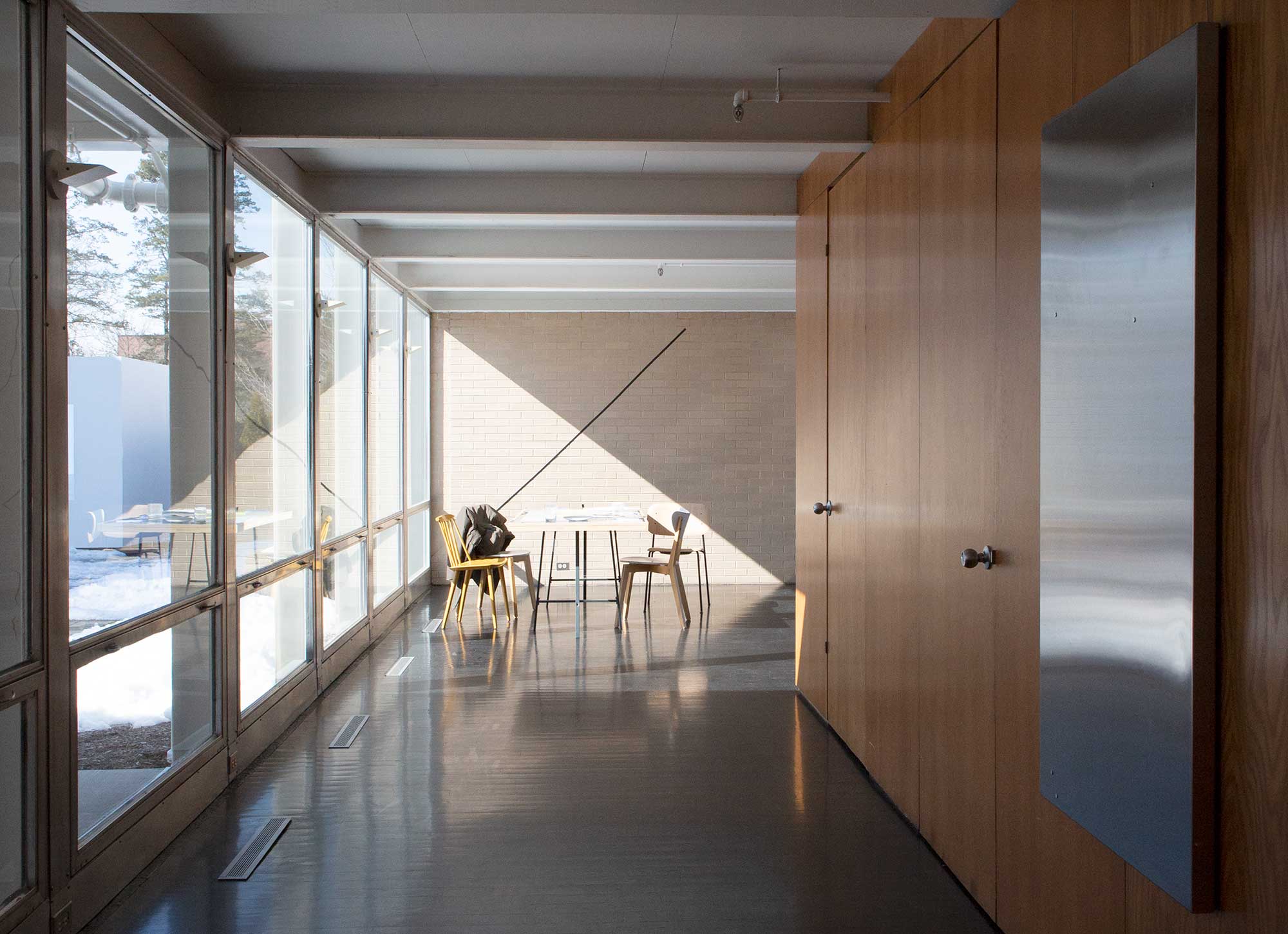
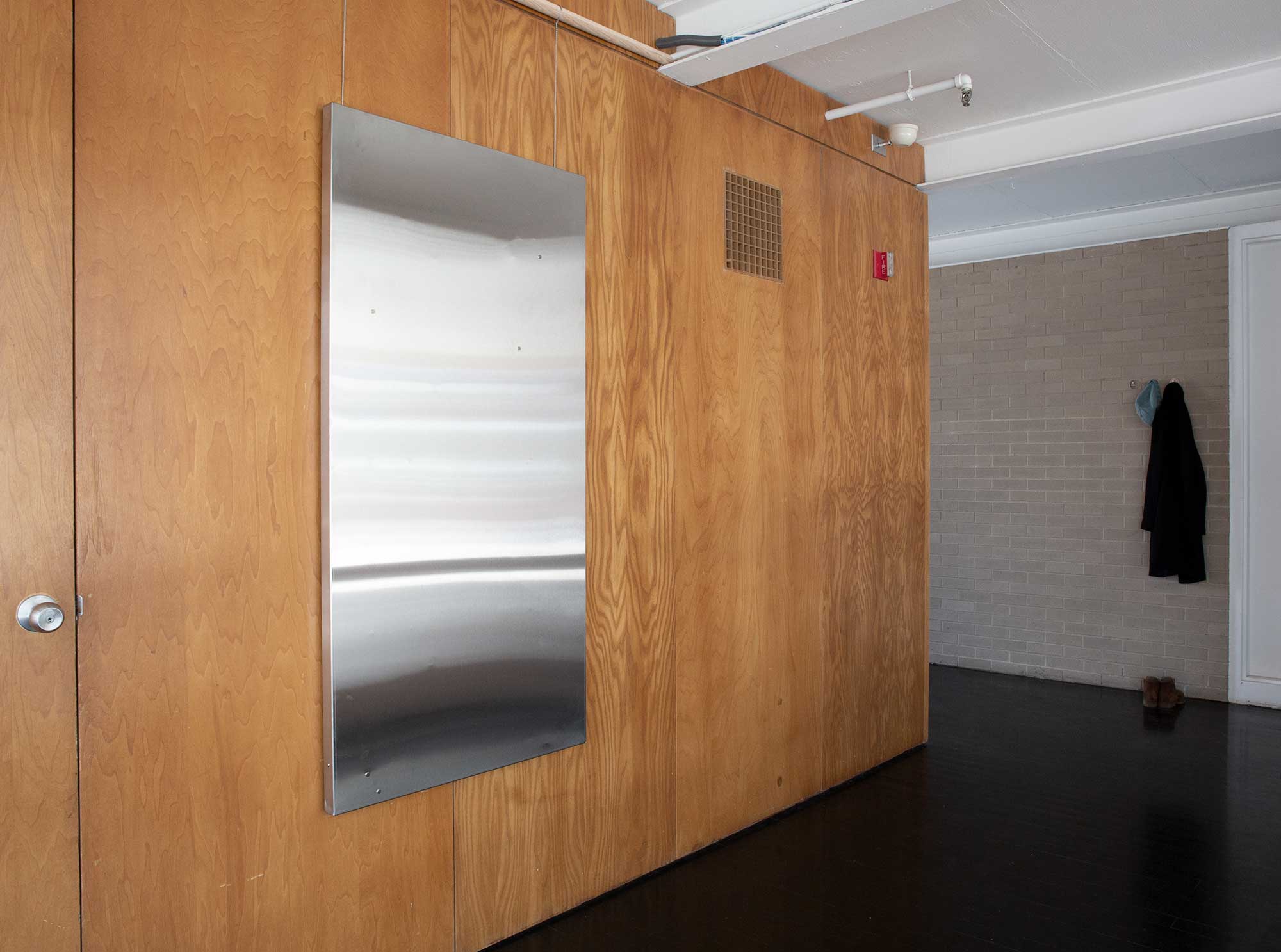
Claudia Weber, Stainless Steel (2019), 30″ x 60″ x 2″, rare earth magnets, wires, dowel
Installation Days
Move-in Day
On June 23, 1952, reporters followed John and Philomena Dougherty (photo cropped) as the first family who moved into their new home in Levittown, PA. Mies van der Rohe’s McCormick House was also built in 1952, but the houses’ programs and contexts couldn’t have been more different. The Levitt house was part of an affordable housing initiative on a massive scale by developer Levitt and Sons Inc., who had just built Levittown, NY, and continued to promote more traditional housing styles, creating starkly homogeneous towns from scratch. The McCormick House was built by an architect in a modernist style for a wealthy client as a prototype. But the McCormick House was also Mies van der Rohe’s attempt to develop a prefabricated structure that would allow the simultaneous construction of several units on dedicated lots in suburban areas. (…)Read More
Former Children’s Wing
These photographs of the former Children’s Wing of the McCormick House were taken in between exhibitions. The current layout differs significantly from Mies van der Rohe’s original floor plan from 1952. Several wood panels have been removed and others reconfigured. The photographs show clockwise from top left: the former kitchen area; the former living room / playroom / girl’s room / utility area; the hallway to the maid’s room; the boys’ room.












